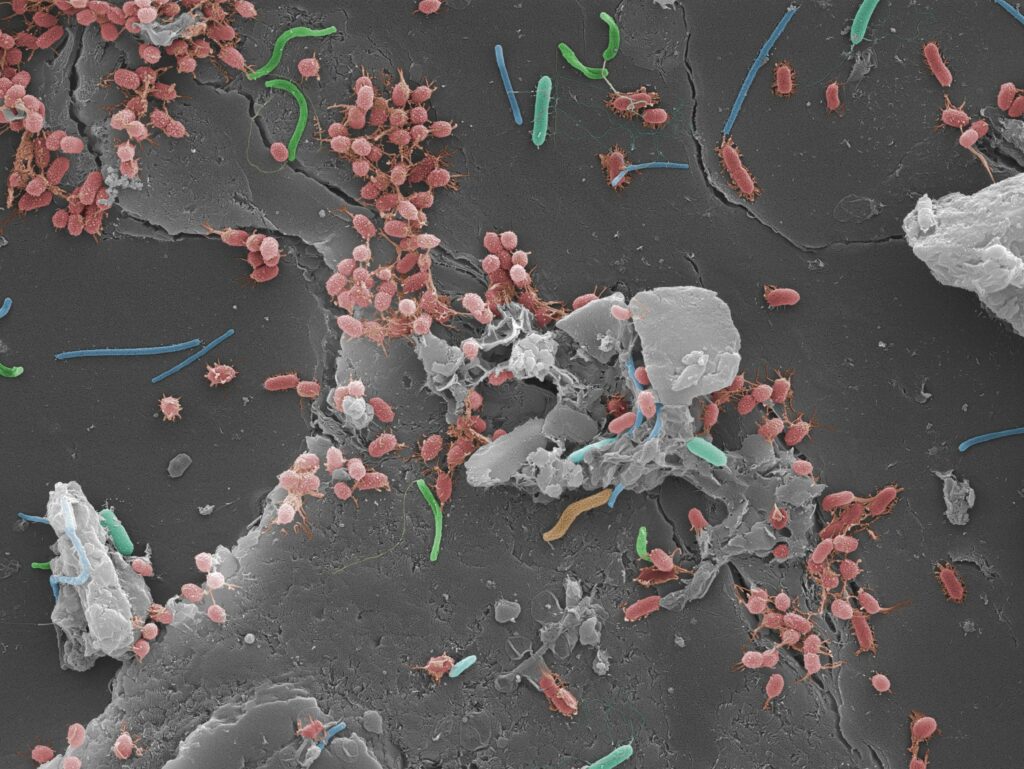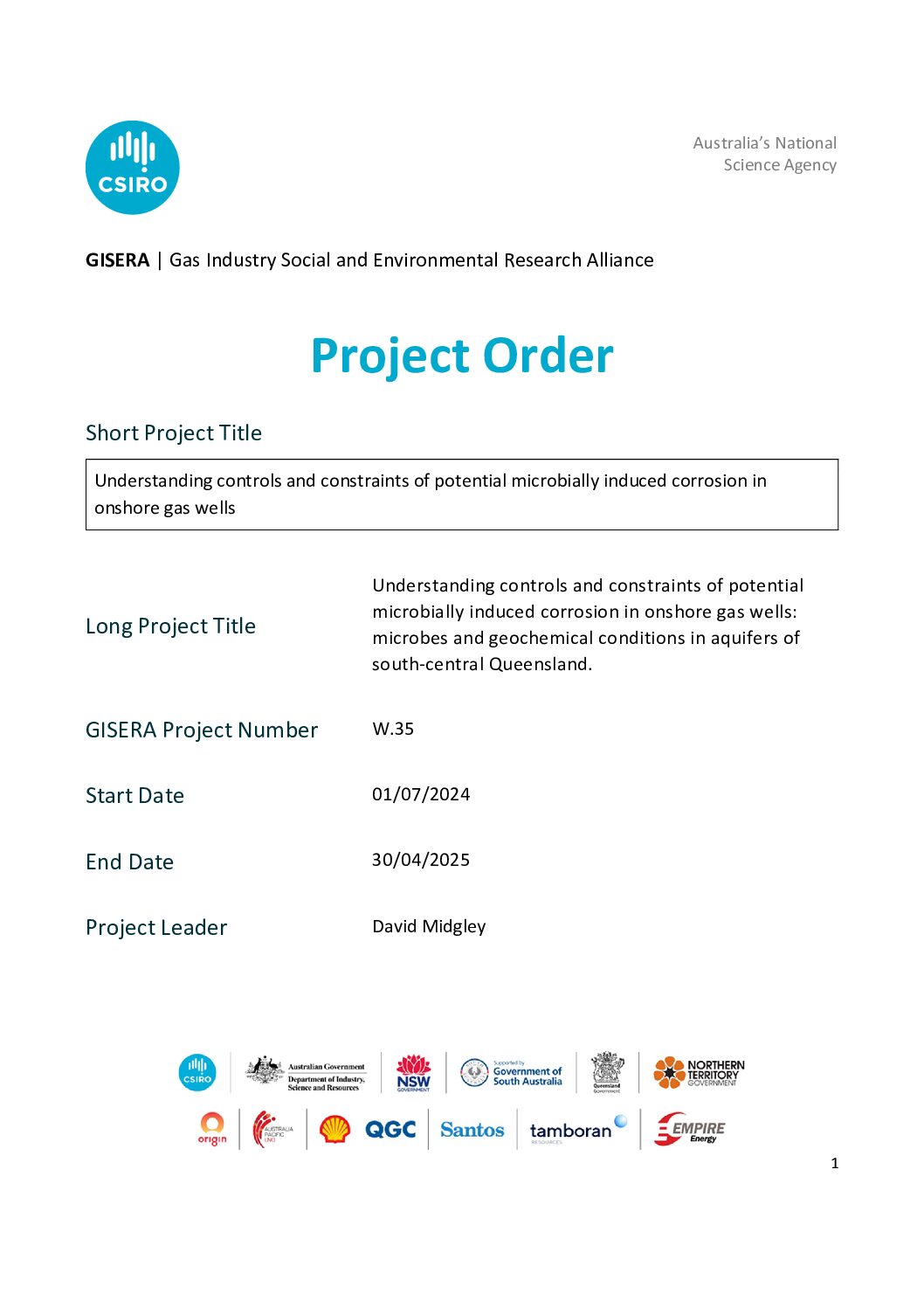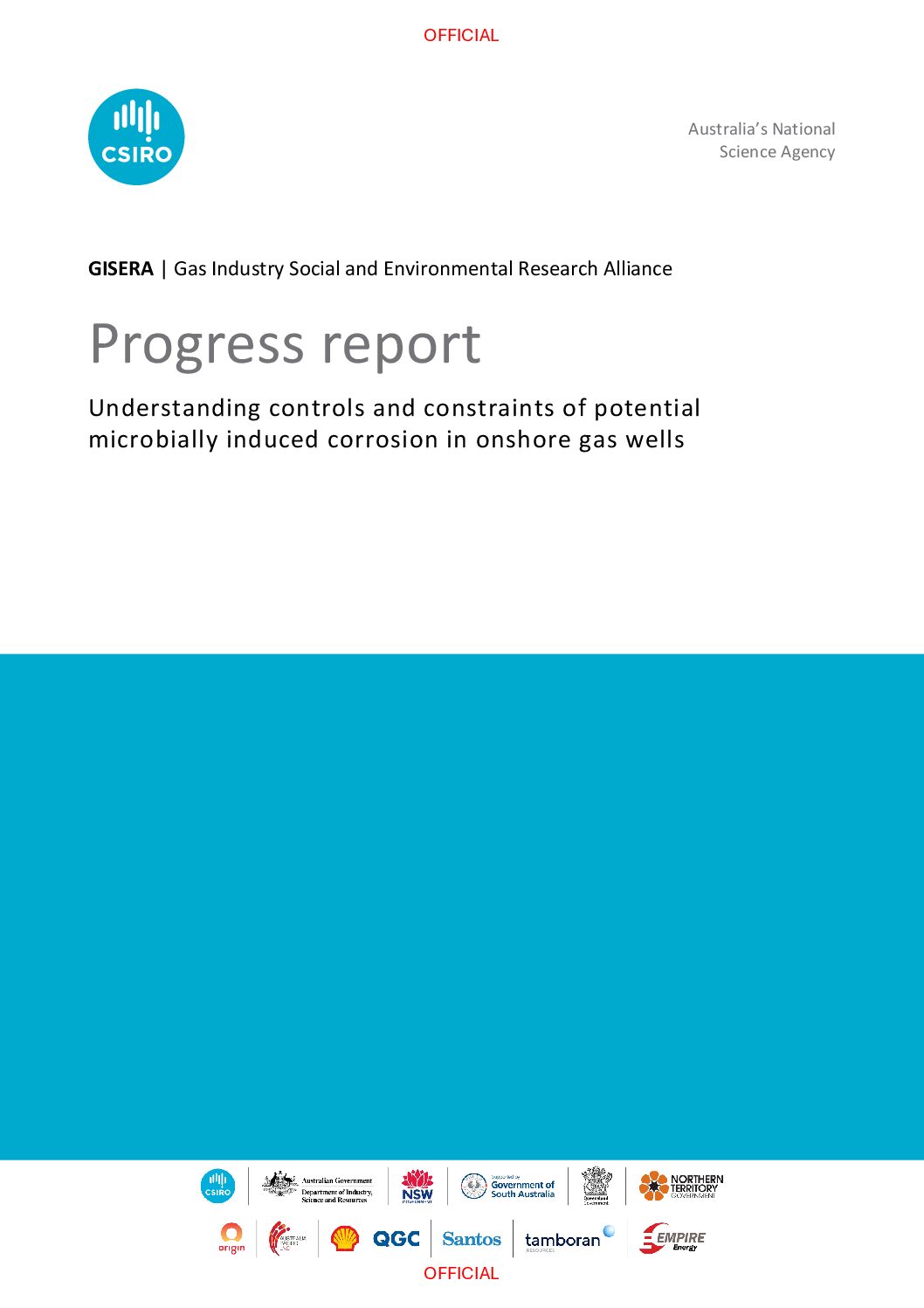Microbial activity in the subsurface
Significant public concerns exist around CSG well infrastructure integrity. A part of these concerns is the potential hazards microbes may pose on casing failure. Microbes can cause Microbial Influenced Corrosion (MIC), which if it occurs, could present a hazard to materials used in wells.
However there is little publicly available knowledge on microbes in the subsurface in onshore gas producing regions.
A recently completed GISERA project reviewed cements, steels and microbial processes in Queensland CSG wells and searched scientific literature and online databases for microbiological data in the subsurface in South East Queensland.
This study showed limited data exist on the microbiology of aquifers, outside of information available from the aquifers of the coal seams. No information is available for domestic or agricultural aquifers.
Those data for the CSG producing wells indicate that while organisms capable of acid production via sulphur/sulphate reduction are relatively common, they are unlikely to undertake these activities in these wells due to an absence of suitable oxidized forms of sulphur-containing chemicals.
For microbes to cause corrosion to well infrastructure, there are key ecological and physicochemical contributors required for this process. These are adherence or biofilm formation materials, and the presence of suitable chemical compounds that allow microbial activity generally. For the former questions around biofilm formation, no data are available in Queensland in CSG or non‐CSG subsurface settings.

A false colour scanning electron microscope image of microbes on coal.
A false colour scanning electron microscope image of microbes on coal.
To address this knowledge gap, this CSIRO research project will conduct a field sampling campaign in the Surat and Bowen basin regions; collecting samples from CSG‐related, agricultural and domestic aquifers.
These samples will include bulk water and swabs of well infrastructure surfaces. DNA sequencing analyses will be used to determine and compare microbial community profiles from planktonic communities in bulk water and adherent (biofilm) communities on infrastructure surfaces. Additionally, analyses on a suite of water chemistry values that underpin specific microbial activity will also be carried out on samples.
The resultant data will provide valuable information on which microbes adhere to subsurface materials and improve understanding of subsurface microbial activities in south central Queensland.
Together with the water chemistry data, this information will provide insights into the potential hazards and risks associated with MIC in wells found in south central Queensland. These data will be compared to a selection of agricultural and domestic well bore water and swab samples.



